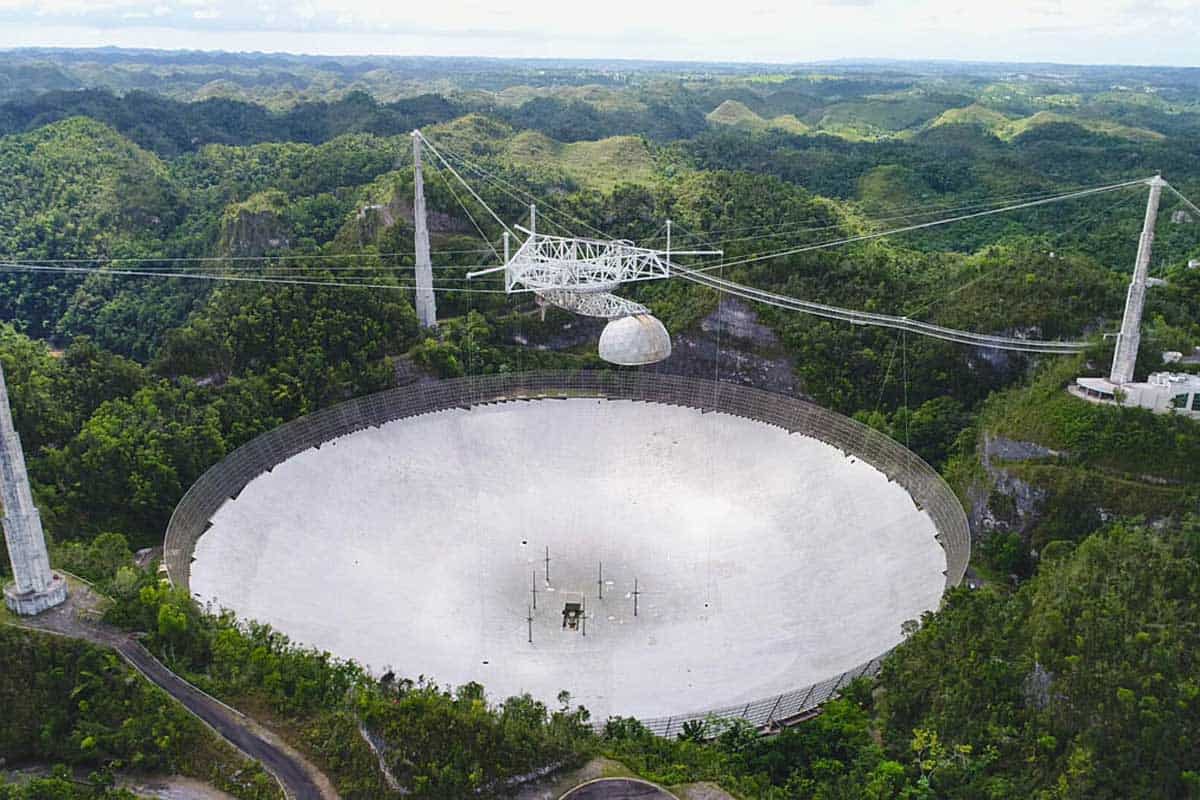
Researchers in Japan have found striking similarities between the statistical behaviour of repeating fast radio bursts (FRBs) and earthquakes.
FRBs are brief, intense bursts of radio waves from outside our galaxy. Whilst these bursts typically last a few milliseconds, astronomers have also found bursts a thousand times shorter.
FRBs are broadly split into two categories: repeating FRB sources and “one-off” FRBs, which have not yet repeated. Whether all FRB sources repeat remains an open question.
In their study, astrophysicists Tomonori Totani and Yuya Tsuzuki from the University of Tokyo used a dataset of 7000 bursts from three repeating sources. The data was taken by radio astronomers using the Arecibo observatory in Puerto Rico and Five-hundred-metre Aperture Spherical Telescope in south-west China.
One of these sources – FRB20121102A – lies over three billion light-years away and was the first discovered FRB repeater.
The duo found that the arrival times of bursts from FRB20121102A showed a high degree of correlation, with many more bursts arriving within a second of each other than would be expected if the generation of bursts were completely random. This correlation faded away at longer timescales, with bursts separated by over a second arriving completely at random.
They drew similarities with this behaviour to how earthquakes produce secondary aftershocks in the hours or days following a tremor, but then become completely unpredictable once an episode of aftershocks passes.
Moreover, they found that the rate of these FRB “aftershocks” follows the same Omori-Utsu law that characterises the occurrence of earthquake aftershocks on Earth. The law states that shortly after a large earthquake, the rate of aftershocks remains constant over a brief period of minutes to hours, after which the aftershock rate drops, decaying as roughly the inverse of the time since the main shock.
They found that each burst had a 10-50% chance to produce an aftershock, depending on its source. This likelihood remained constant, even when the FRB-activity suddenly increased in a given episode. Earthquakes show similar behaviours, their aftershock rates stay constant even if the overall earthquake activity changes within a region.
There is, however, one major difference between FRBs and earthquakes. While earthquake aftershocks tend to be systematically weaker than the main shock, time-correlated FRBs have completely uncorrelated energies. This means that for FRBs there exists essentially no difference between a “preshock” and an “aftershock”, because the main shock does not stand out.
In a galaxy far, far away
Totani points out, however, that this could be due to the limited dynamic range in FRB data compared to earthquakes: most FRBs are very faint, being only slightly above the detection limit.
Out of the many theories explaining the origin of FRBs, magnetars – neutron stars with exceptionally strong magnetic fields – have become one leading option.
This is because the solid crust of neutron stars, which surrounds a superfluid core, can suddenly releases built-up stresses by starquakes that then lead to FRBs, just like tectonic plates produce earthquakes as they shift around Earth’s liquid mantle. And so, “It was rather natural to compare repeater FRBs and earthquakes,” Totani told Physics World.

Astronomers announce haul of the shortest fast radio bursts ever discovered
The work also adds to previous findings from astronomers in China in 2018 who showed that the Gutenberg-Richter earthquake-law could be applied to the energy distribution of FRBs. The law expresses a relationship for the total number of quakes expected above a certain energy within a given time and place.
Indeed, while FRBs may seem innocuous events compared to earthquakes, they are anything but innocuous. The weakest FRB ever detected still released over a billion times more energy than the 9.5 magnitude 1960 Valdivia earthquake in Chile – the most powerful earthquake on record.
There also exist FRBs that are another 10 million times stronger, as Australian radio astronomers reported on Wednesday when they discovered a FRB that took some eight billion years to reach Earth – the furthest burst ever detected.
Totani now plans to apply mathematical models from earthquake studies to FRB data, hoping to tease out hints about the properties of nuclear matter in neutron stars.
The research is described in Monthly Notices of the Royal Astronomical Society.
